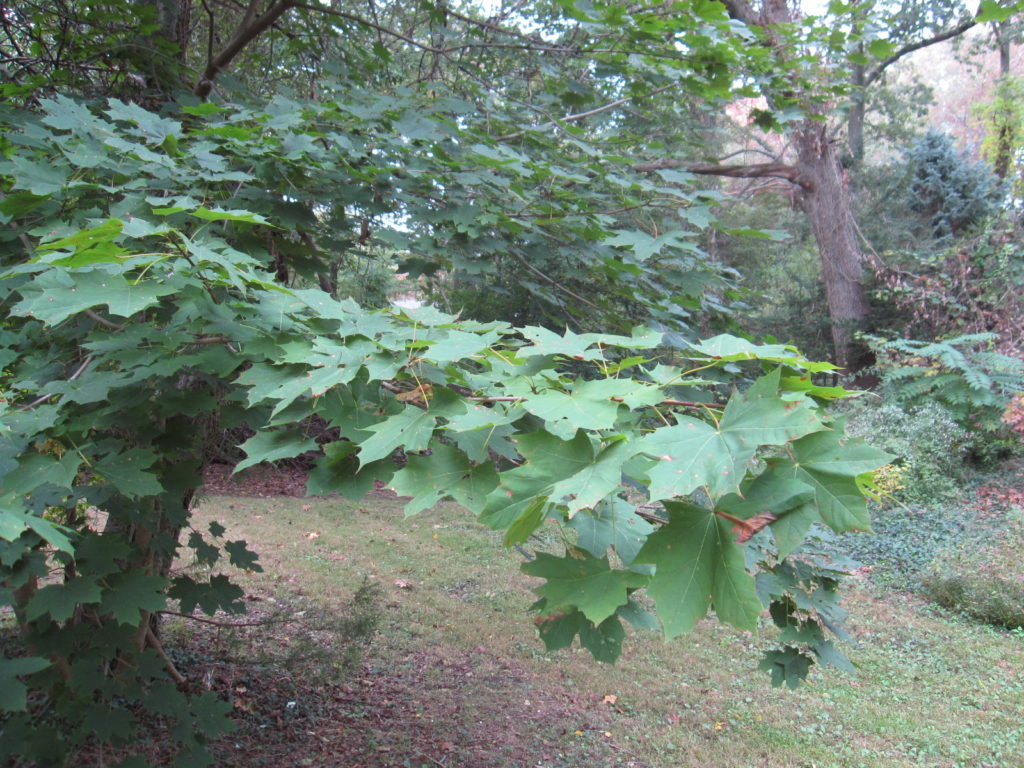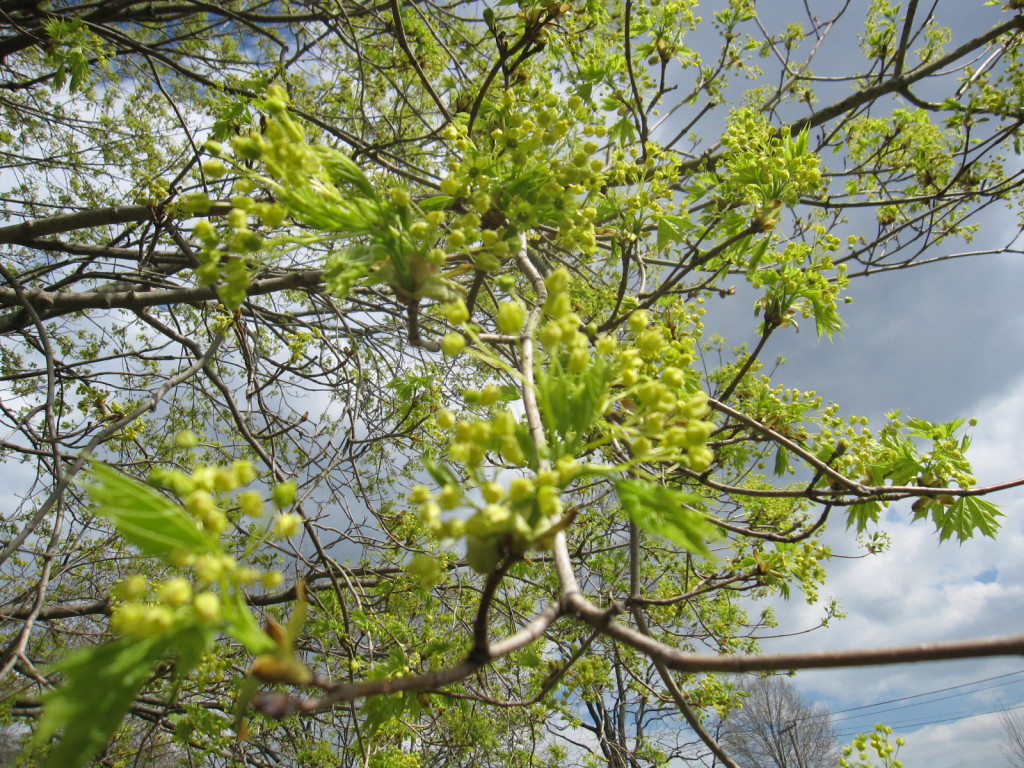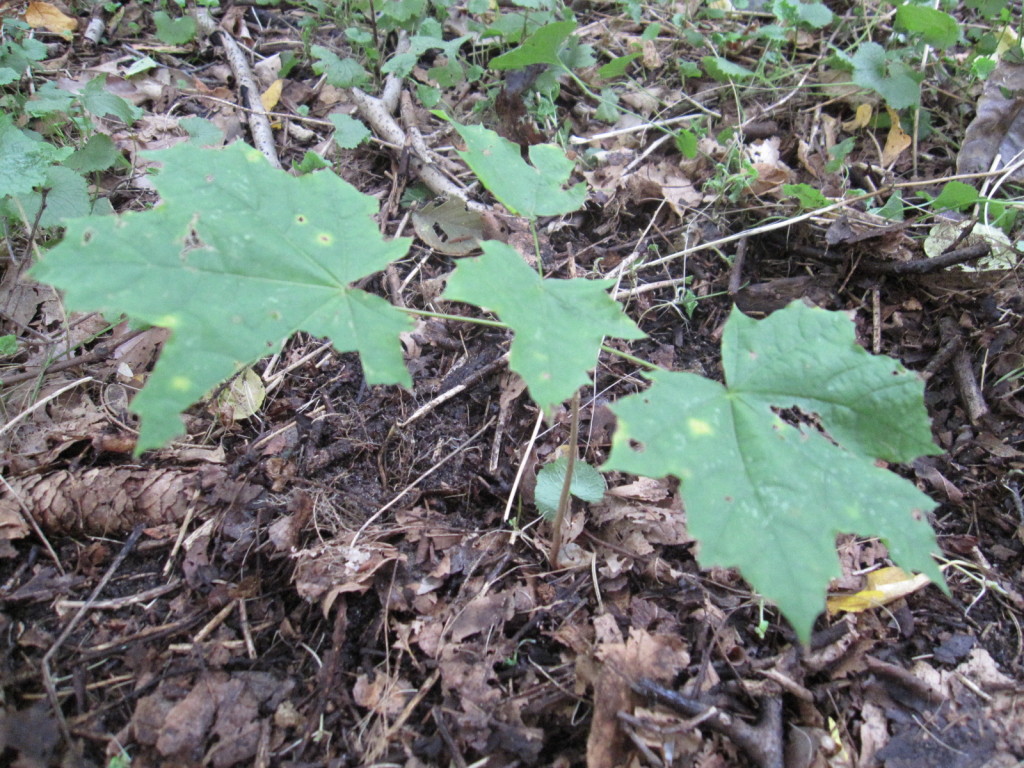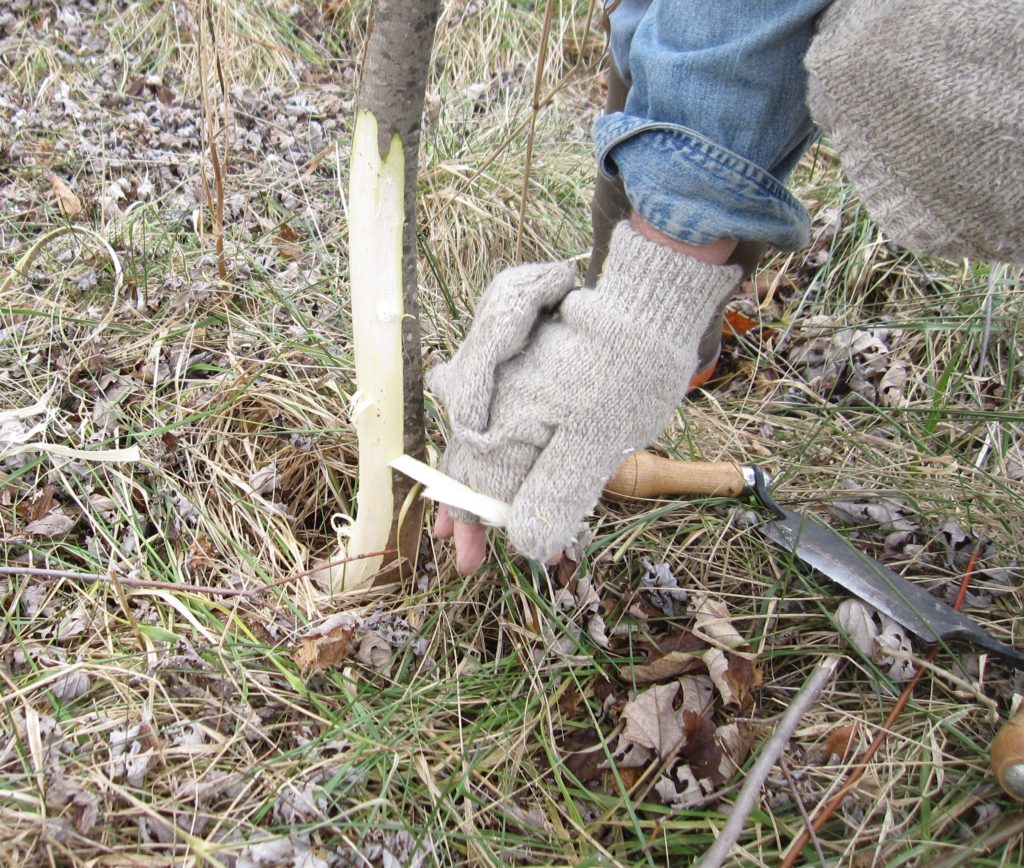Hover over images for detail:

Acer platanoides or Norway maple is similar in appearance to sugar maple. The easiest way to identify Norway maple is to break the leaf at the node where it joins the stem (petiole). You’ll notice white sap at the break, whereas sap from other maples is clear.

Also, Norway maple leaves have sharp points, while the tips on other maple leaves are rounded. Finally, Norway maples are the only maples that flower in spring.

The shallow roots of this species allow for simple removal of seedlings and small saplings. See Remove by Squeegee. Norway maples seedlings and roots can be easily pulled by hand, but for those a foot tall a large pair of household pliers will help. Beyond that the best tool is a 4 foot or taller weed wrench. It will provide enough leverage to up-root a 2″ diameter stem. (While the original weed wrenches are no longer available, similar tools can be found online.)
Maple trees have extensive root systems that sprout vigorously from spring through summer after the tree is cut down. One way to address these sprouts is to remove them from the stump as they appear. A second way is to expose the lateral roots and sever them with a Pulaski axe or mattock. Finally, saplings and small trees may be killed down to the root by debarking the stem or trunk with a 5 inch draw knife. This simple and reliable method assures that the roots die along with the tree to prevent viable shoots from emerging.
Be aware: Some municipalities require permits to cut or debark trees.

With the back of one’s underarm wrapped around the tree, lean down and, starting from the ground with the draw knife, shave upward to between 18 and 24 inches, removing only the rough, fibrous outer and inner bark to the very smooth, slippery inner surface. If possible, rip the bark down to the ground, or use a wood chisel and hammer to remove any missed bark. This prevents suckers from growing from the base of the stem wherever bark remains intact. One year later when dead, these trees can be taken down without having to address new sprouts emerging from living roots. Care must always be taken when climbing a dead tree to cut it down.
